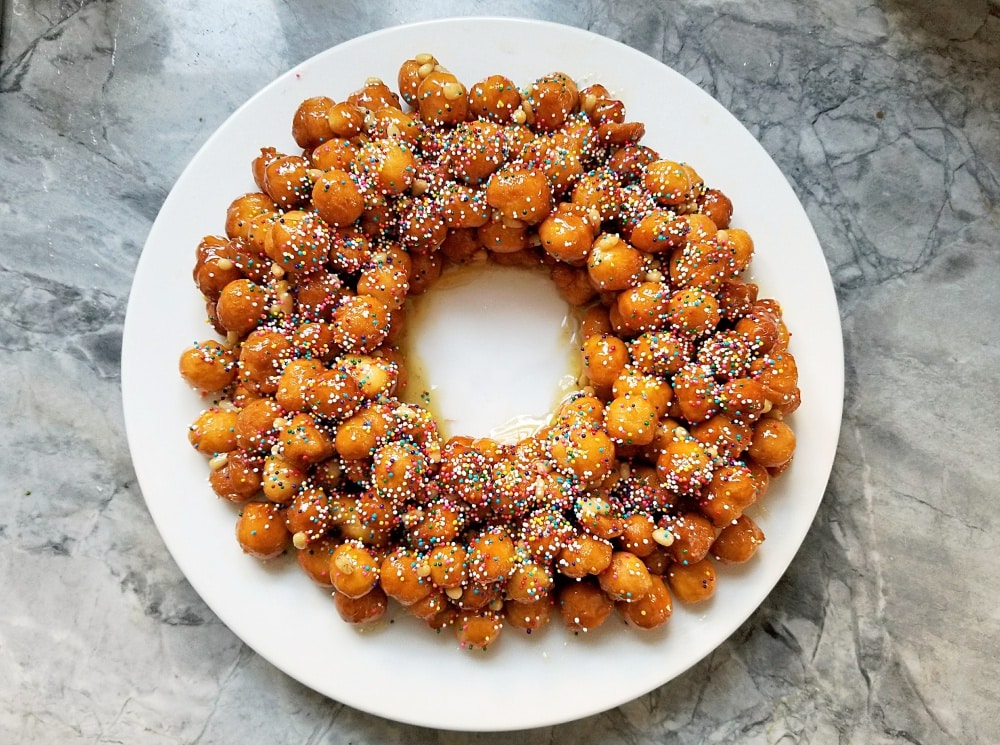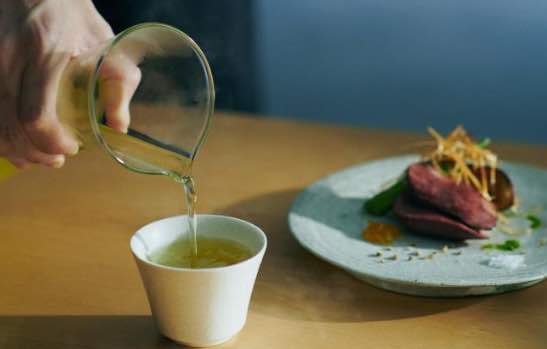Italian Honey Balls (Struffoli) Recipe – Yankee Magazine
Traditionally, Neapolitan struffoli, commonly known as Italian honey balls, were strictly a Christmas confection to serve at the end of a long feast in generous mounds or wreath shapes. But Italians now enjoy these tiny balls of fried dough soaked in honey as an all-purpose holiday treat, and it’s not unusual to see Italian bakeries selling struffoli around Easter time. The name struffoli is thought to be derived from the Greek strongoulos, meaning “rounded,” and you can find similar honey-soaked desserts in many Mediterranean cultures, from ancient Roman vermiculos to Greek loukoumades.

This festive sweet combines citrus-scented fried dough and a lemon-honey syrup.
Amy Traverso
While Italian honey balls are sometimes made quite simply, without extra flavorings, here we’ve added a classic Neapolitan blend of citrus (lemon and orange) and anise liqueur (such as sambuca, ouzo, or anisette). The latter is optional, but it’s easy to find a miniature bottle at your local liquor store, and it adds so much to the final dish. Really, the only difficult part of making struffoli is rolling all those tiny balls. In this case it helps to have extra sets of hands, big or small.
Total Time: 1 hour, 30 minutes, plus 2 hours resting time
Hands-on Time: 1 hour
Yields: 3 1/2 to 4 dozen balls
Ingredients
- 2 cups all-purpose flour, plus extra for work surface
- Zest of 3/4 orange
- Zest of 3/4 lemon
- 3 tablespoons granulated sugar
- 1/2 tablespoon baking powder
- 1/2 teaspoon salt
- 4 tablespoons unsalted butter (1/2 stick), softened, plus more for the glass
- 3 large eggs
- 1 1/4 teaspoons anise liqueur (optional)
- 1 teaspoon vanilla extract
- 1 cup honey
- 1/2 cup granulated sugar
- 1 1/2 tablespoons lemon juice
- 1/2 cup toasted pine nuts (optional)
- Garnish: Rainbow nonpareils
Instructions
First, make the dough: In the bowl of a food processor, pulse together the flour, lemon and orange zest, sugar, baking powder, and salt. Add the butter and pulse until the mixture looks a bit like cornmeal. Add the eggs, anise liqueur, and vanilla. Pulse until the mixture comes together into ball. Wrap the dough in plastic wrap and refrigerate for least 30 minutes and up to 1 day.
Set a large skillet over medium-low heat and fill with vegetable oil to a depth of 3/4 inches. You want to bring the temperature up to 375°. Line a large baking sheet with paper towels and set aside. Meanwhile, divide the dough into 4 equal pieces. Lightly dust your counter with flour and roll out the first piece to a rough square about 1/4-inch thick. Cut the dough into 1/2-inch wide strips, then cut the stripes crosswise into 1/2-inch pieces. Roll each piece of dough into a small, marble-size ball. Using a strainer or large slotted spoon to prevent splatters, transfer the balls into the hot oil. Quickly stir the balls to prevent sticking and cook, stirring and turning occasionally, until they puff up and turn nut brown in color, 2 to 3 minutes. Transfer to the lined baking sheet to drain. Repeat with the remaining batches of dough.
In a 4- or 5-quart Dutch oven, stir together the honey, sugar, and lemon juice over medium heat. Bring to a boil and cook, stirring occasionally, until mixture is foamy and the sugar has dissolved. Remove the pan from the heat and add the fried dough and the pine nuts. Stir with a spatula until well coated, then let the mixture sit in the pan for 5 minutes.
Grease a straight-sided water glass with a bit of butter and set it in the middle of a round serving platter. Spoon the struffoli around the glass, then use your hands to form them into a wreath shape. Pour any extra syrup over the mound, then let it sit for at least 2 hours and up to 1 day so the mixture can set. Just before serving, sprinkle with nonpareils. Struffoli can be either eaten one at a time as finger food or scooped onto a plate and served with a spoon.

Some cooks add hazelnuts, candied fruit, or almonds to the mix.
Amy Traverso
Have you ever tried Italian honey balls? Let us know what you think!
This post was first published in 2017 and has been updated.



